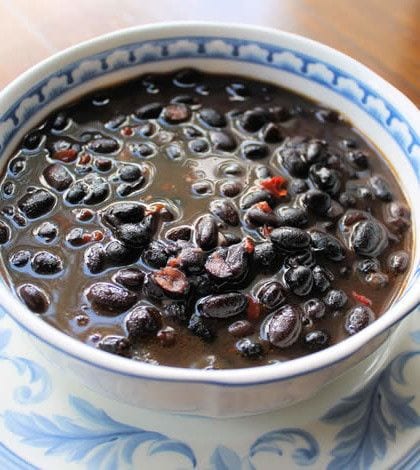Beans Missing from Cuban Tables
Rosa Martinez

HAVANA TIMES – White rice with black or red bean soup is the most common meal in all of Cuba, from the most western region where they grow tobacco in Pinar del Rio, to Maisi, in the far eastern province of Guantanamo.
Anyone who visits the Island, and travels to any rural or urban area, the beach or mountains, will verify that Cubans eat rice every (or nearly every) day, and it is accompanied by a bean stew whenever they can. My dear readers, main dishes are a whole nother story.
Rice and beans is a combination of inseparable basic foods for millions of people all over the world, especially in its poorest regions like Latin America, Central America and the Caribbean.
Even though they are eaten separately or together (in a tasty congri), these grains are fundamental for the human diet and national economy, and production trends are extremely important in every country.
That’s because rice is rich in starch and is an excellent source of energy; it also has iron, vitamin B and protein. However, beans are just as wholesome as they are rich in protein and are high in iron and other essential minerals, so eating them together gives you all the essential amino acids you need.
Whenever Cubans can, they accompany white rice and bean stew with fried chicken or fish, or some meat or cold cuts to complete the dish, which can also have vegetables. However, if things are tight and you don’t have anything else (like most of the time) these two friends are enough to fill any Cuban’s stomach.
But what was the fail-safe meal for ordinary Cubans up until recently, has now become a dreadful headache. It just so happens that our beloved bean is becoming more and more expensive (even black beans which were always the cheapest on the island), which is why when my daughters asked me this morning why I hadn’t cooked any yummy red beans in centuries, I told them that it wasn’t my fault, that it was …’s fault.
Then… well I began to explain how important beans were for human diets. That they come in different colors and unimaginable forms, and that according to what I read in the “Proceedings of the National Academy of Sciences, the most recent investigations on beans have proved that they aren’t in fact from the Andes originally like we used to think but are Mexican. That beans came from central Mexico towards Central and South America until they reached Cuba.
When I had finished my long explanation, my girls looked at me very seriously and asked: what does that long-winded answer have to do with us not having red beans even on Sundays?






When I read Rosa’s article as an agriculturalist, I think of all those hundreds of thousands of acres of good agricultural land lying fallow and reverting to bush in Cuba. I think of the potential volumes of nutricious food that even reasonably competent management could produce. I think of other vegetables in addition to beans, that are currently unobtainable, I think of potatoes which are unobtainable although they are a plant like tobacco, of South American origin. I think of Cubans lining up for the permuta and pensioners endeavoring to exist on their pension of 200 pesos per month ($8 US).
And, I think of the children like Rosa’s girls and the struggles of mothers like Rosa, to fill their stomachs with decent food.
Then I think of the hundreds of bored looking people sitting at the Poder Popular listening to their elders (and they really are elders) and betters (and they really are superior) telling them of the potential successes of the communist system – if only it were not for the “blockade” – actually embargo.
I think of the evident falsehood of that latter claim when on occasion one can buy frozen chicken legs in packs from TYSON (the largest producer in the USA!), and much preferable to frozen ostrich legs from Argentina which being predominantly bone are only suitable for soup – but then there aren’t any vegetables to put in the soup.
Of course i am guilty of a sin in communist eyes – that of thinking as an individual, rather than conforming to the dictates of the Communist Party of Cuba.
Cuba without congri? The end of life as we know it can’t be far off….